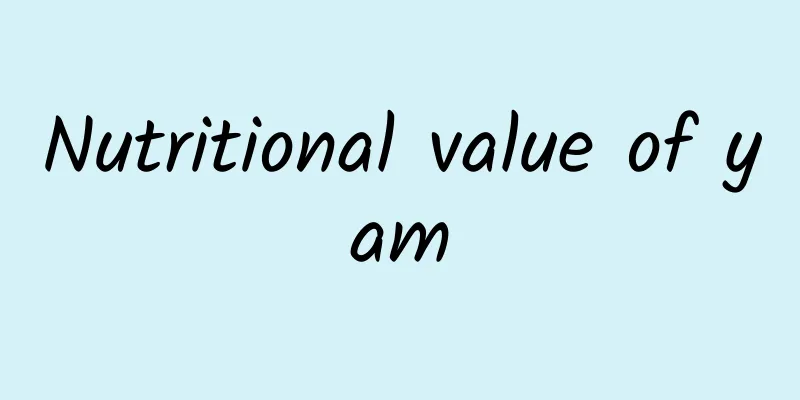Nutritional value of yam

|
Another name for yam is sweet potato, which appeared before humans existed. In ancient times, it evolved from a flowering plant. The nutritional value of yam is very rich. From the past to now, people have regarded it as a high-quality and inexpensive tonic. It has the best of both worlds. It can be eaten as a staple food, as well as a dish. In addition, it can be steamed and eaten with sugar or honey. In addition, yam is the best choice for girls who are losing weight, because all the calories and carbohydrates contained in yam are only half of sweet potatoes, and it does not contain any fat, and the protein content is twice as high as that of sweet potatoes. Yam contains a variety of trace elements, especially potassium; the types and quantities of vitamins it contains are relatively small, and it does not contain vitamin B12, vitamin K, vitamin P, vitamin D, and almost no carotene. Yam leaves are an excellent source of carotene and a good source of calcium, iron and vitamin C. Yam contains a variety of digestive enzymes such as starch saccharifying enzyme and amylase. In particular, the amylase it contains, which can break down starch, is three times the content in radish. Eating it when the stomach is bloated can promote digestion and eliminate discomfort symptoms. The material basis for the strong viscosity of yam is a complex of sugar and protein - a substance called mucin, which can prevent mucosal damage and protect the stomach wall under the action of pepsin, preventing gastric ulcers and gastritis. Yam contains saponins, bile alkaloids and other ingredients. Saponins can lower cholesterol and triglycerides, and improve diseases such as high blood pressure and hyperlipidemia. Choline is the material basis of acetylcholine, a neurotransmitter related to learning and memory. Impact on disease and health: Yam contains mucin, amylase, saponin, free amino acids, polyphenol oxidase and other substances in relatively rich content. It has a nourishing effect and is an excellent food supplement for recovery from illness. Yams contain no fat, and the mucin they contain can prevent fat deposition in the cardiovascular system and prevent premature hardening of arteries. Yam can increase the body's T lymphocytes, enhance immune function, delay cell aging, and have the effect of prolonging life. The mucus polysaccharides in yam combine with inorganic salts to form bone and give the cartilage a certain elasticity. Although yam is rich in nutritional value, it will turn black and purple if it is not eaten immediately after peeling. This is mainly caused by a primary color called enzyme contained in the yam. Therefore, it is best to soak the yam in coarse water after peeling it to prevent it from changing color. |
<<: The efficacy and function of Beiqi
>>: The efficacy and function of black ants
Recommend
Black workers: 90s bees cloned into a million-strong army, almost subverting the South African beekeeping industry
More, more, more. Written by | Krestrel Honey bee...
Eating like this will make you sick! 6 bad eating habits that will "eat away" your immunity...
The last week of April every year is World Immuni...
The efficacy and function of Zongba leaves
I don’t know if you are familiar with Zongba leav...
Why does my girlfriend always think she is right? (Must read for boys)
One minute with the doctor, the postures are cons...
The efficacy and function of Qingtuerfeng
There are so many medicinal herbs in the world, a...
Why do birds migrate?
Birds migrate to different areas to breed or over...
What are the effects and functions of small blood vine
In fact, the small spatholobi is a deciduous or s...
Why do our fingers or toes get wrinkled after being in water for a while?
If the hairless skin on a person's fingers, t...
What changes will occur in your body if you don't eat sugar for 30 days?
One minute with the doctor, the postures are cons...
How did leftover coffee grounds become a fashion favorite?
From waste to fashion favorite: coffee fiber ● In...
Thump! Thump! Thump! Can I still exercise if my heart is beating fast?
Thump! Thump! Thump! Do you also sit and do nothi...
Can the human body take Huahong tablets for a long time?
When mentioning Huahong tablets, everyone will th...
The efficacy and function of shell teeth
Shell teeth are a common Chinese medicinal materi...
World Dance Day | Beware! This "dangerous move" can cause disability, but many people actually think it is good for children.
Today is World Dance Day . In recent years, dance...









